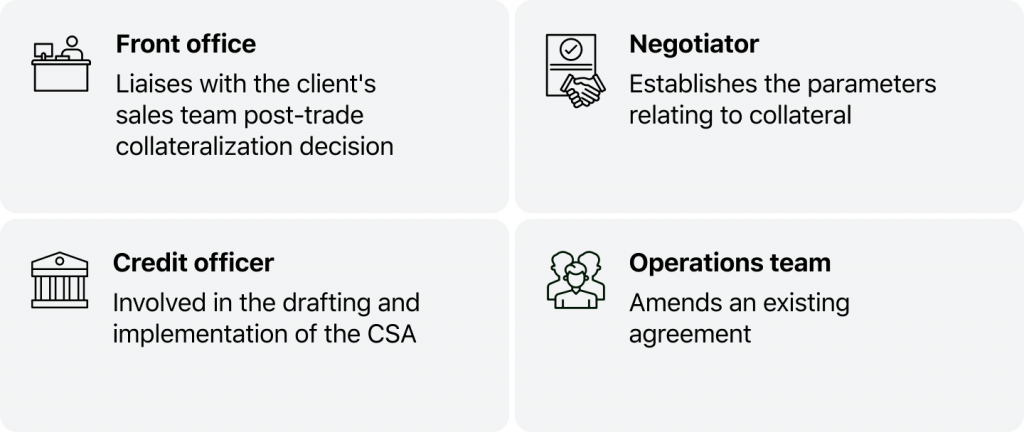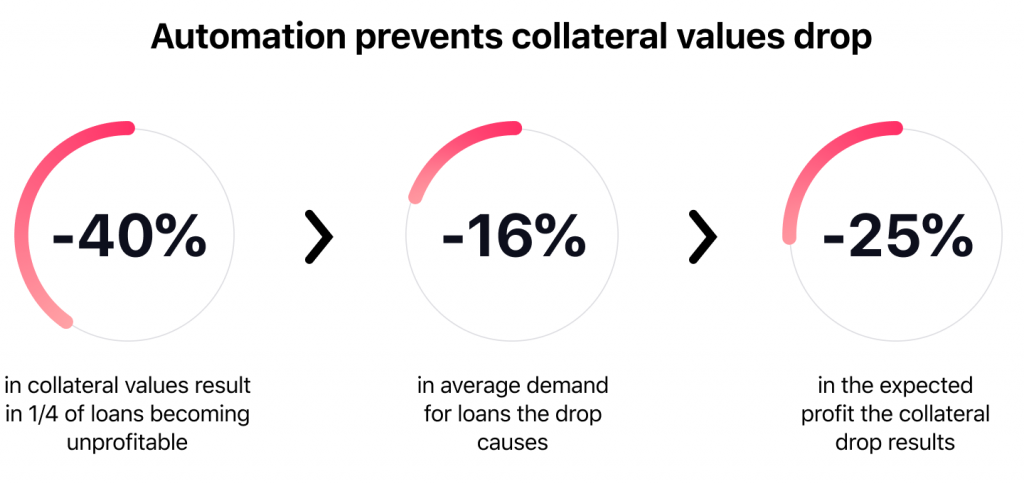Collateral management is a booming industry. According to the latest statistics by Market Watch and Grand View Research suggest it could be worth billions by 2030. Unlike previous generations, where the fragmented collateral management process involved the value of an asset being decided by an in-house expert and then stored, or at least ownership held, the new evolution of the industry is seeing digital collateral management take center stage. This means that financial organizations once again need to set out on the course for digital transformation and that means upgrading collateral management technology.
What is collateral management and which technologies does it use already?
Encompassing everything from mortgaged houses to vehicles to securities to exclusive pieces of art and more, almost any tangible of genuine value can be considered collateral. Collateral is used to assure a lender of repayment, when issuing a loan—financial or otherwise—and should a return fail to happen, the company takes ownership of the collateral in exchange. Using collateral instead of fiat currency has long proven beneficial to both lenders and borrowers, supporting wider market growth.

Although collateral management is nothing new. In fact, it can almost be traced to the beginning of currency. Nowadays, the old processes are a thing of the past, and modern collateral management systems have become how these transactions, which often involve tangible assets, are managed.
Previously-used manual processes and other outdated methodologies are fast being replaced by more modern tools, including automation, AI, machine learning, and blockchain technology, which digitize and reshape how collateral management operates in a big way.
Digital collateral management is the future
Even collateral management professionals agree, the industry is prime for innovation. Past iterations and technology use cases have created a scattered technological landscape, where some collateral management challenges, such as data tracking, are solved. Still, others remain in a silo, which creates wider problems down the line.
Loan Management System Trends: AI, Security & Compliance in 2023The drive this year and moving forward is to draw upon the current collateral management software’s capabilities and move towards developing a more holistic collateral management process and systems that are ready for the future of finance. But what does that look like?
Based on our research, it’s likely that contemporary collateral management technology continues to use and develop industry best practices, combining them in new ways. Including:
Collateral automation for lending business
From document handling to loan origination to loan issuance and every step in between, collateral management companies are seeking out solutions that can seamlessly take over all these internal and external processes, making it easier for staff to track and report on loans. By automating these processes, lenders can more efficiently manage their documents in one place and better assist clients throughout the lending process.

Real-time monitoring and reporting
Most Important Insights & Reports for Your Lending BusinessRisk is a very real factor in collateral management, and while is always some element of the unknown, having the right tools on hand can help manage that risk. The latest technology draws upon risk modeling software to calculate and evaluate risk in correlation with the object of collateral. Being able to make these calculations quickly means that companies can give their clients the most up-to-date decisions on their lending. At the same time, on the business end of things, these tools can be used to track and monitor the real-time value of currently held assets and report frequently. This allows companies to make decisions quickly and take proactive risk mitigation.
Risk management frameworks
Having the right tools in place helps companies manage risk in more ways than one. The latest technologies are able to use data to analyze current and potential future risks to identify patterns that could potentially impact the business. In addition, this data could be used to build digitized risk management frameworks in the form of a smart contract that ensures that all collateral adheres to this framework in terms of quality, eligibility, and concentration of collateral assets before a loan is issued.
Integration with market software
Collateral doesn’t exist in a bubble—that would be a worst-case scenario. Instead, it relies on seamless finance software integrations with wider market infrastructure. Currently, this includes the likes of central counterparties (CCPs) and central securities depositories (CSDs), but this could be expanded to other bodies. So how does collateral management technology help in this case? By developing tools that can connect and integrate with third-party providers, fintechs can facilitate collateral movements, and collateral optimization strategies, and ensure compliance in a more connected way.

Standardization and collaboration processes
Just like we alluded to in the previous point, the market doesn’t operate within a silo. It is subject to a variety of internal and external factors that work towards its operability. This is a huge discussion now, considering the evolving role of cryptocurrency and ledger technologies that allow secure digital transactions. As loan management software moves into the future, companies are collaborating to establish common practices, data standards, and protocols that ensure its success.
Regulatory toolkits
As a result of increased collaboration, it’s likely that increasing regulations will emerge as various technology use cases develop within the collateral management industry. AI, machine learning, and data analysis techniques can be utilized to assess how compliance and organization is and set steps in place to get a company back on track quickly.
What is collateral management in your business in 2023 and beyond?
Don’t let your company become collateral by failing to upgrade your digital collateral management system. Instead, invest in the right technology at the right time to get tangible results. By establishing how the future of collateral management looks in your company and creating a strategy, you can move forward on a direct course for success when implementing your digital transformation initiatives.
Still not sure about the next steps to take? Get in touch with our team at HES today and we’ll walk you through the ins and outs of collateral management software and explore the potential options for your precise business needs.



















